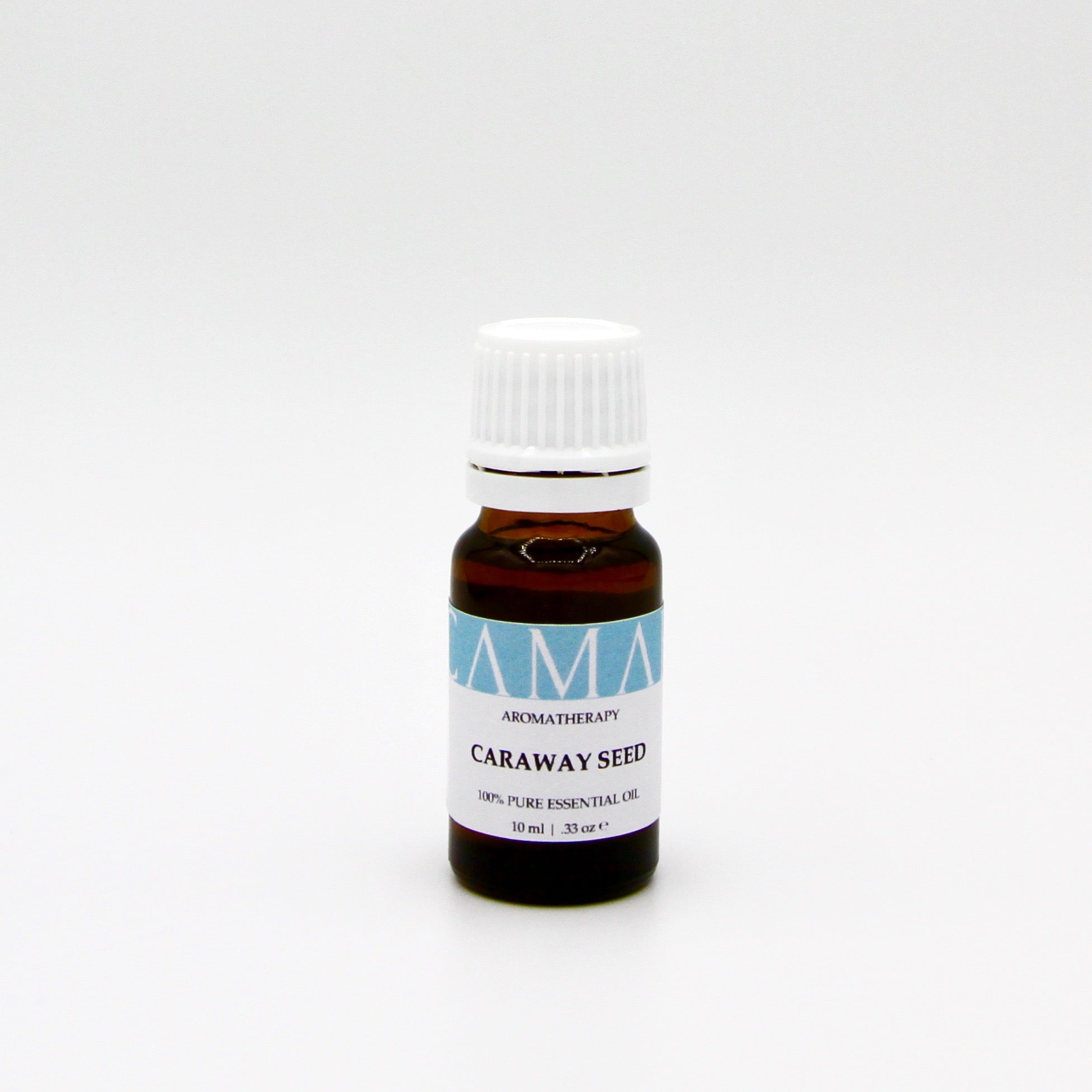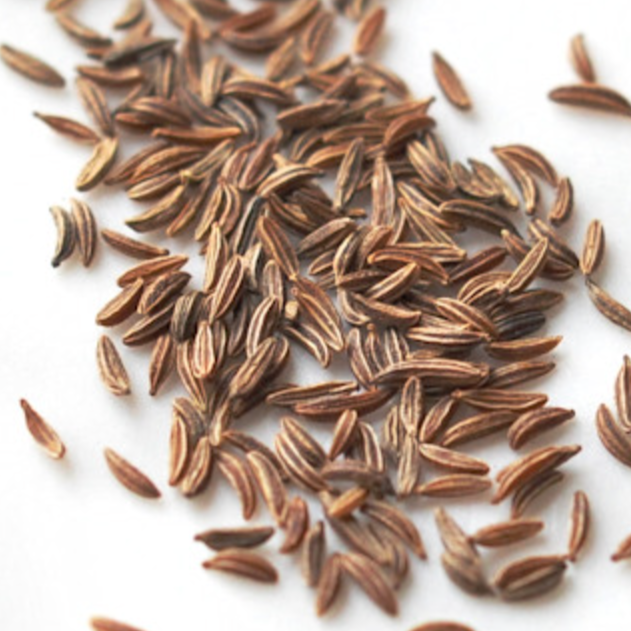

Mostly known and used as a domestic spice, used in bread, cakes and cheeses. Grown for seeds and essential oil, especially carvone. A biennial herb of about 75cm in height, with similar features and appearance to that of the Carrot family, with fine feathery lace-like, fine fern-like leaves. The flower head contains many small slender, slightly curved seeds, approximately 2mm long. These seeds are collected for steam distillation to produce Caraway essential oil.
Having been a traditional medicine for calming the nerves and mental fatigue, also helps to ease abdominal and chest discomfort, and aiding the digestive system - like nausea, bloating, colic, flatulence, menstrual cramps, indigestion and poor appetite. It is said to boost the immune system against colds and helps the respiratory system, in relieving coughs, and associated laryngitis and bronchitis complaints. Popular as a fragrance component in soaps, lotions and perfumes. As well as laxative preparations and flavouring ingredient in pharmaceutical goods. Helps to mask unpleasant tastes and odours.
Safety Precautions : Flammable.
Blends well with : Basil, Cardamom, Cassia, Chamomile, Cinnamon, Coriander, Frankincense, Ginger, Jasmine, Lavender, Orange, Tangerine and other Spice oils - though it is quite overpowering.
FACT : Carvone is a member of a family of chemicals called terpenoids. Carvone is found naturally in many essential oils, but is most abundant in the oils from seeds of caraway and dill.
Choose options


